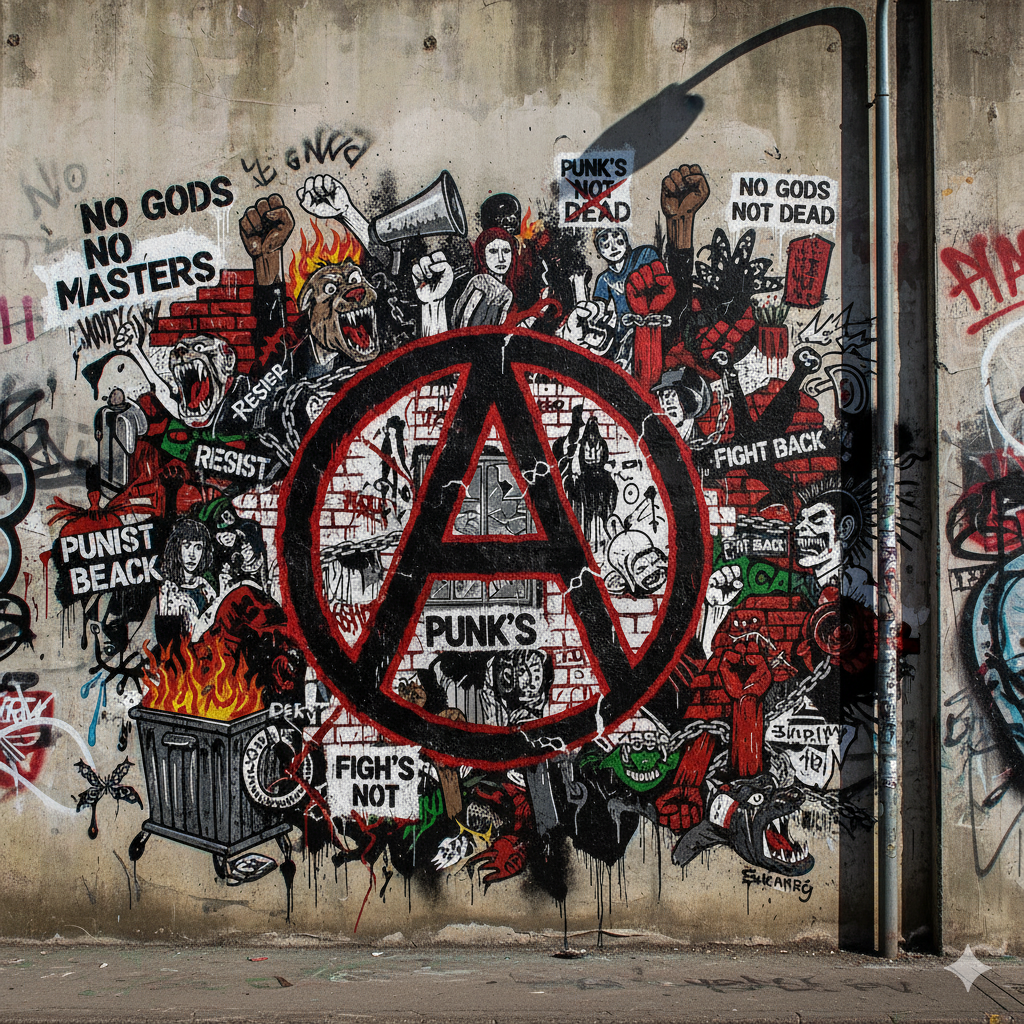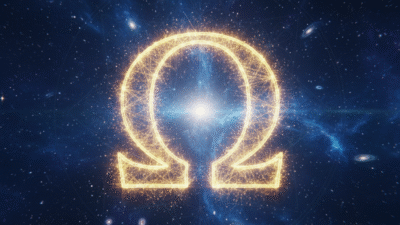⚡The Symbol That Shook the System
The Anarchy symbol — the bold “A” enclosed in a circle — is one of the most recognized rebellion emblems ever created. You’ve seen it on denim jackets, street murals, and album covers. But beyond its rough, punk appearance lies a story over 150 years old.
It first appeared in 1868, used by early political activists demanding freedom from oppression. The symbol gained massive recognition in the 1970s punk scene, where it evolved from a political logo to a cultural revolution mark.
Today, searches for “anarchy meaning” and “Ⓐ symbol meaning” have risen by nearly 80% since 2020, showing how the idea of “freedom without control” still resonates. Whether tattooed, painted, or printed, this simple mark challenges one idea — that power belongs only to the few.
🧠 Literal Meaning of the Anarchy Symbol
The “A” stands for Anarchy — from the Greek word “anarchos,” meaning “without rulers.”
The circle represents unity, wholeness, and mutual respect.

Together, they mean:
This is the heart of true anarchism — not chaos, but balance achieved through equality and self-responsibility.
🏛️ Historical Origins: From Philosophy to Revolution
🔹 1800s: The Roots of Anarchy
In 1840, French philosopher Pierre-Joseph Proudhon declared, “Property is theft,” marking the philosophical birth of anarchism. Early thinkers opposed monarchy, capitalism, and authoritarian systems — advocating for cooperative, self-governing societies.
🔹 1868–1930: The Political Symbol
By 1868, the “A in a circle” began appearing in anarchist literature and flags. The circle symbolized inclusion — that freedom should apply to all, not just a few.
🔹 1970s: Punk Movement & Global Recognition
The punk revolution transformed the circle-A into a global pop culture emblem. Bands like The Sex Pistols and Crass used it on posters, records, and clothing, turning political defiance into cultural identity.
It became a universal protest symbol — from anti-war marches to skate parks — merging ideology with art and self-expression.
🌍 Cultural Meaning of the Anarchy Symbol

| Culture/Context | Symbolic Meaning |
|---|---|
| Political Movements | Anti-authoritarianism, social equality |
| Music & Punk Culture | Freedom, individuality, rebellion |
| Fashion & Art | Expression of identity and boldness |
| Digital Activism | Freedom of information and privacy |
The Anarchy symbol has transcended its origins — now used by activists, artists, and digital creators to express one timeless message: “No one controls me.”
🔥 Spiritual & Psychological Symbolism
Though often linked to protest, the circle-A also carries deeper, psychological meaning:
- The Circle → Balance & Protection
Represents the universe’s natural order — even freedom must coexist with harmony. - The “A” → Awakening & Self-Authority
The letter cuts through the circle like a sword of awareness — the power to rule oneself.
To many thinkers, it’s not just a political symbol — it’s a call for inner freedom and conscious living.
🧩 Anarchy in Nature and Philosophy
Anarchy doesn’t mean chaos. In science, ecosystems and galaxies follow self-organizing principles — complex order without a central authority.
Philosophically, anarchism believes the same for society: people can live ethically without imposed rule. True anarchy means maturity, cooperation, and moral autonomy — not disorder.
This is the paradox that makes the symbol powerful: a circle of unity around a letter of defiance.
💣 Modern Usage: From Streets to Screens

🧷 Street Culture
Seen in graffiti and urban art, the symbol stands for “defiance with identity.” It marks those who live freely and think independently.
🎸 Music and Media
The circle-A remains an essential part of rock, metal, and punk imagery — a sign that truth doesn’t follow rules.
🖥️ Digital Freedom
In the internet era, activists use the symbol to promote data privacy, online transparency, and open-source collaboration.
👕 Fashion Symbolism
From vintage punk jackets to luxury streetwear, designers like Vivienne Westwood turned the circle-A into a statement of individuality and rebellion.
💬 Quotes That Capture Anarchy’s Spirit
“Anarchy is order without power.” — Pierre-Joseph Proudhon
“Freedom is the mother, not the daughter, of order.” — Pierre Armand
Both quotes express what the symbol truly stands for — freedom guided by self-awareness, not by force.
🕊️ The Positive Side of the Anarchy Symbol
Despite stereotypes, anarchy’s core values are deeply positive:
- Equality over hierarchy
- Voluntary cooperation over control
- Freedom over fear
- Individual conscience over blind obedience
In truth, the Anarchy symbol reminds us that freedom is not a threat — it’s the foundation of human dignity.
🌀 Spiral Symbol Meaning: The Timeless Language of Energy 2025
🧠 Anarchy Symbol Quick Facts
| Aspect | Details |
|---|---|
| Origin Year | 1868 |
| Creator | International Workingmen’s Association |
| Elements | Letter A (Anarchy) + Circle (Unity) |
| Philosophy | “Order through freedom” |
| Adopted By | Punk culture, political activists, digital freedom groups |
| Modern Meaning | Resistance, individuality, ethical freedom |
🪶 Conclusion: The Circle That Never Closes
The Anarchy symbol (Ⓐ) is more than paint or ink — it’s an idea that refuses to die.
It unites two opposites — rebellion and balance — into one perfect design .The Anarchy symbol (Ⓐ) stands for freedom, defiance, and independence. Originating in the late 1800s, it represents a belief in a world without rulers — where cooperation replaces control. Over time, it became a global icon of rebellion, punk identity, and personal liberation.
From 19th-century philosophy to 21st-century digital freedom, it continues to whisper the same message:
“Be free. Think for yourself. Respect others — without rulers.”
That’s not chaos. That’s conscious order.
❓ FAQs About the Anarchy Symbol
1. What does the Anarchy symbol mean?
It represents freedom, equality, and self-governance — a world where cooperation replaces control.
2. Who created the Anarchy symbol?
It was first used by the International Workingmen’s Association in 1868, later popularized by punk movements in the 1970s.
3. Why is it called the “A in a Circle”?
Because it visually joins two ideas — “A” for anarchy, “O” (circle) for order — forming the phrase “Anarchy is Order.”
4. Is Anarchy chaos or peace?
True anarchy seeks harmony without rulers — peaceful order achieved through voluntary cooperation.
5. Why is it popular in punk culture?
Because punk celebrates independence, authenticity, and defiance — all of which align perfectly with anarchist ideals.

James Thornton is a researcher and writer focused on sleep science, lucid dreaming, and the neurological aspects of dream formation. With a strong academic foundation in cognitive science, James specializes in analyzing how dreams influence memory, creativity, and emotional health. His contributions to DreamingSign.com are well-known for their scientific accuracy and thought-provoking insights, helping readers understand the powerful connection between the brain and the dream world.




